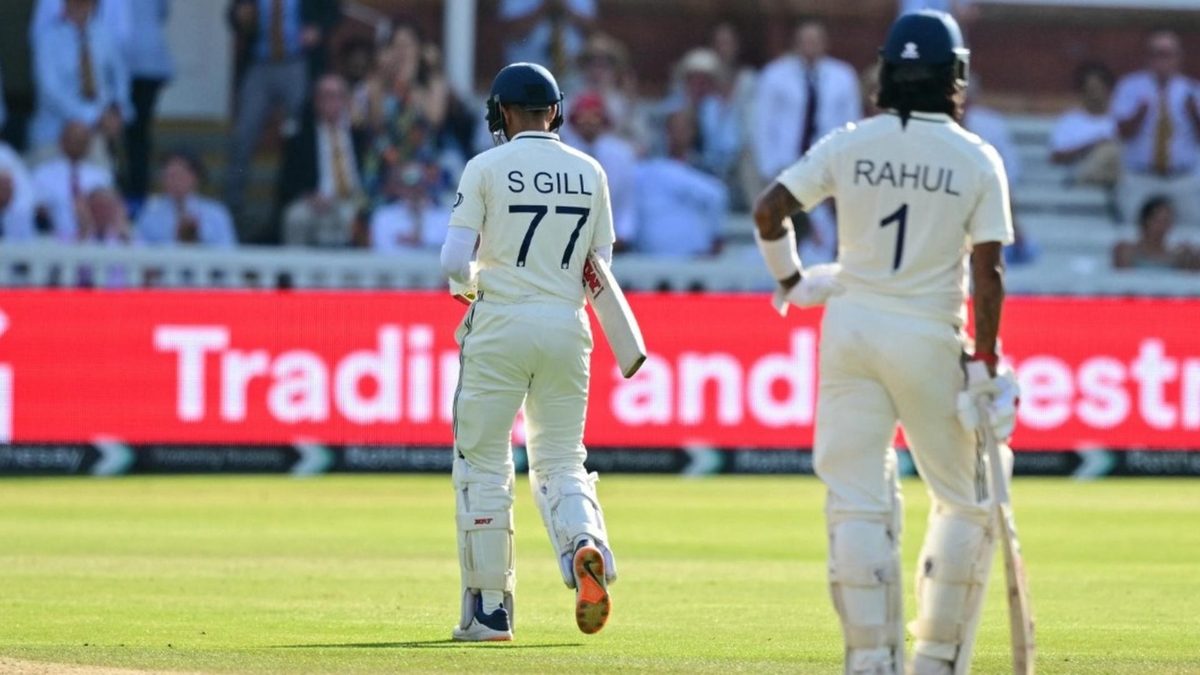
India, trailing 1-2 against England, will look back at their own follies and decision-making in a series they have largely dominated, writes Sarah Waris.
When Ravindra Jadeja and Nitish Kumar Reddy were batting on day three, there were countless times you'd have had your hands ready to pull out your hair. Several mix-ups, yes-and-nos, and indecisive running later, you wondered whether a run out at that point – needless and entirely avoidable – would just have fit right in with the tone India had set for themselves across this series. While the two just about survived, that moment of hesitation and confusion mirrored India’s larger story on this tour: a team frequently on top, yet often undone by their own missteps.
After 15 days of compelling cricket, India find themselves trailing 2-1 in a series they have arguably dominated more often than England. They’ve been the side with more sessions won, the team that’s dictated terms for longer stretches, the one that’s looked more in control, only to lose grip at critical junctures. England, by contrast, have spent much of the series finding answers, yet are the happier team heading into Manchester.
In an alternate universe, India could well have been 3-0 up: the series sealed, the debate around Virat Kohli and Rohit Sharma’s absence retired with them, and the disappointment of the 1-3 defeat to Australia gradually receding into memory. But this isn’t an ideal world, and India have once again let a series drift away through a sequence of small, entirely controllable moments, now needing to win both remaining games to achieve what they last did in 2007.
It’s a pattern that has begun to feel all too familiar. Last year, gainst Australia, India found themselves in a strikingly similar position: 1-0 up after the first Test and frequently ahead in subsequent games, only to let the advantage slip through avoidable errors. Australia were five down for under 100 in both Melbourne and Sydney, but dropped chances, a lack of bite and over-reliance on one bowler led to repeated slip-ups. India dropped several catches in that series, many of them regulation ones by young Yashasvi Jaiswal. It cost them momentum, leaving them to play catch-up as the series went by.
Now in England, it’s a similar story unfolding. At Lord’s, it was the muddled ball-change episode that first seemed to alter the course. India had taken the second new ball in the 81st over on day one and picked up three wickets early on day two. Jamie Smith looked unsettled, Ben Stokes and Chris Woakes were gone, and the pressure was building. But complaints soon emerged that the ball had gone soft, and in a “bizarre” decision, India asked for a replacement in the 91st over. The “new” ball they received, as Siraj quipped on the stump mic, looked like it had been used for more than 10 overs. The swing vanished, and England, from 287-7, reached 353-7 by lunch. In that hour and a half, India lost control.
Then came the lapse that genuinely turned the Test, one even highlighted by Shubman Gill. On day three, up against England’s first innings total of 387, KL Rahul and Rishabh Pant looked to bat the opposition out of the game. From 107-3, they added 141 runs, with Rahul inching towards his century and Pant looking solid despite an injured thumb. But with just three balls to lunch, Pant called for a risky single to try and get Rahul on strike. The hesitation proved fatal. Stokes’ direct hit caught Pant short. Rahul did reach his hundred after the break, but was out next ball. From there, India lost their last wickets for 139 runs as the scores were level at 387. In a series of fine margins, that was a crucial point.
The collapse continued into the next innings. India, chasing 193 on a worn pitch, needed to see out the final half hour on day four without damage and set up day five for themselves. But in under 18 overs, they lost four wickets. Jaiswal hooked a ball that rose too sharply. Gill never looked settled. Karun Nair played down the wrong line. Night-watch Akash Deep was castled by a sharp Stokes delivery. By stumps, India were 58-4, failing to lay any foundation and conceding the psychological advantage to the hosts, who exploited it wonderfully on Monday morning. Though Jadeja fought, and fought hard, a heartbreaking loss could not be prevented.
The fielding, too, let them down. Rahul’s drop of Smith on five, who added 46 more in the first innings, was only one of several. Brydon Carse was put down twice too, and scored a valuable half-century. These weren’t one-off lapses but carried on from the Australia series and the first Test here, where India’s drops let get away 250 runs, with Harry Brook also reprieved before scoring off a Jasprit Bumrah no-ball and going on to score 99.
Even with the bat, mistakes have come at crucial junctures. In Leeds, India were 430-3 in the first innings when Gill, well set on 147, attempted an uncharacteristic slog-sweep off Shoaib Bashir. He had mistimed a similar shot earlier in the over but tried again and was caught at deep square leg. India collapsed to 471 all out, as they let a position of dominance slip away.
India’s tactics have also begged questions. With their score at 376-7 in the first innings on day three, they batted for 5.5 more overs, adding just 11 runs. At that point, a declaration could have meant three or four overs at a tired England top order after a whole day of fielding in searing heat. Instead, they got just one. What followed was an ugly over of time-wasting, expletives, and theatre. But the moment to rattle England early had been missed.
There were other smaller things. India conceded 63 extras in the game, 36 of them byes. Dhruv Jurel, playing his first Test since December 2024 and stepping in for Pant, was keeping on a two-paced surface, often standing up to the stumps to the seamers, a ploy questioned by Dinesh Karthik on air. Not expecting to step in and participate in the game, we need to be kinder to Jurel, but in Test cricket, these small margins end up being so much more.
And now India, in a series they’ve largely dictated, are one loss away from another avoidable overseas defeat. The numbers will suggest a lack of skill, but it has been the inability to hold nerve in crucial moments, the half-chances not taken, and the miscalculations in strategy that have led them there. These are the what-ifs that Test cricket thrives on, and the ones India will have to find a way to end.
Follow Wisden for all England vs India updates, including live scores, latest news, team lineups, schedule and more. The live streaming details for the ENG vs IND series in India, UK, USA and rest of the world can be found here. For Wisden quizzes, head here.








